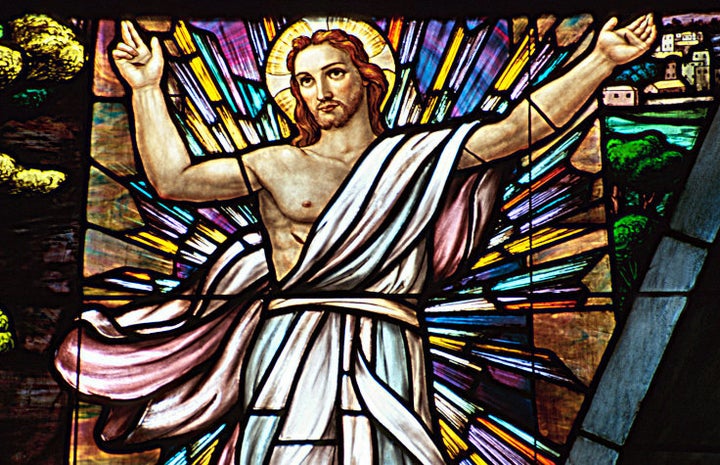
When you're about to publish a book to which you've given not only months, even years, of your life but also your most intimate attention, you wonder into what kind of world you are bringing your treasure. I'm in that position now as my new novel Adam & Eve is published. For news of the world, yesterday I turned to the front page of Louisville's Courier-Journal and read the headline "Yoga can be danger to Christians, Mohler says." Albert Mohler is the president of the Southern Baptist Theological Seminary here in Louisville.
In his blog, Mohler wrote, "Christians are not called to empty the mind or to see the human body as a means of connecting to and coming to know the divine." According to the C-J, Mohler sees yoga as so interwoven with Eastern mysticism that it is "at odds with the Christian understanding." Mohler apparently thinks that looking inward is looking in the wrong direction: "Believers are called to meditate upon the Word of God -- an external Word that comes to us by divine revelation -- not to meditate by means of incomprehensible syllables."
The novel I've written, admittedly fiction, suggests that the story of creation and of Adam and Eve is an artifact that evolved through time, and that it has a history originating in unknown but human narrators. My character Pierre Saad, a Franco-Egyptian anthropologist, knows of biblical scholarship (largely unknown or ignored by middle-class Americans) that suggests the first two chapters of Genesis were written two hundred years after the rest of the book, which in itself had at least two different authors in its earlier forms. (For an actual version of this scholarship, see Karen Armstrong's A Brief History of God.)
To underscore the human diversity associated with creation narratives, I've let Pierre find buried in an alabaster cask in the sands of Egypt another manuscript version of our origins. Far-fetched? Well, my novel is set in the near future, in the year 2020, the Year of Clear Vision. But if we look at the past, the discovery of the Dead Sea Scrolls in 1947, or the discovery near Nag Hammadi in Egypt in 1945 of an alabaster jar about the size of a human containing thirteen additional gospels about Jesus, it does not seem so unlikely that the earth may yet yield up other examples of lost or hidden sacred texts.
Of course Pierre Saad finds what I have written and hidden for him to find. His discovery includes an utterance that metaphorically is somewhat connected to a scientific view of the beginnings:
In the beginning, there was something/ And there was nothing/ When they connected, there was everything/ And it was everywhere.
What urged me to audacious imagining? The inspiration originated in my horror that for some public schools in the United States, not just certain communities, the leadership of whole states have questioned whether scientific evidence of evolution of the human species should be suppressed in favor of the Genesis story. We need to talk about how to read a sacred text: with reverence certainly, but not necessarily literally. Maybe a novel could involve people in such conversations, I thought, one that approaches the idea of Adam and Eve from a new angle.
In my Eden, original sin is not curiosity or disobedience but violence, with killing being the origin of human misery. The story of Cain and Abel, I believe, belongs inside the garden narrative and is the true cause of our fall.
But what about creation more generally, not just the human story but that of our universe? Religious belief, our sense of our selves as humans, our place in the universe is about to be seriously challenged, as it has been in the past. Before Copernicus, most people believed the earth was the center of the universe. In a sense, science made us less self-important; we evolved in our thinking.
Most astrophysicists today believe that the discovery of extraterrestrial life is inevitable. Just read such a mainstream article as last January's edition of the National Geographic. Already more than 400 sterile planets orbiting stars far beyond our own solar system have been identified. In Adam & Eve, set in 2020, the location of extraterrestrial life has been discovered.
What mediates between wisdom from the past and new discoveries? What tools do we have to access our own urgings toward truth? What can liberate us from the bonds of literalism? Lead by the anthropologist, my Adam and Eve characters find an answer deep in the earth, in the earliest of human artifacts. They find a testament to essential human creativeness embodied in cave art (and in artistic expression in general, active today).
So my little novel Adam & Eve is about to come into the world. I'm a bit nervous about it. But my book, like my little blog here (like that of Albert Mohler elsewhere) has something to say. Like many fanfares, there are three notes, combined, to travel the air from me to you: Da, Da, Da. Give yourself to a less literal reading of holy writ; control your fear about how science redefines us; sympathize, through art, with how others experience reality. Adam & Eve suggests that the most important commandment is to eschew violence, especially in the name of religion.
Sena Jeter Naslund's book, Adam & Eve, can be purchased here.